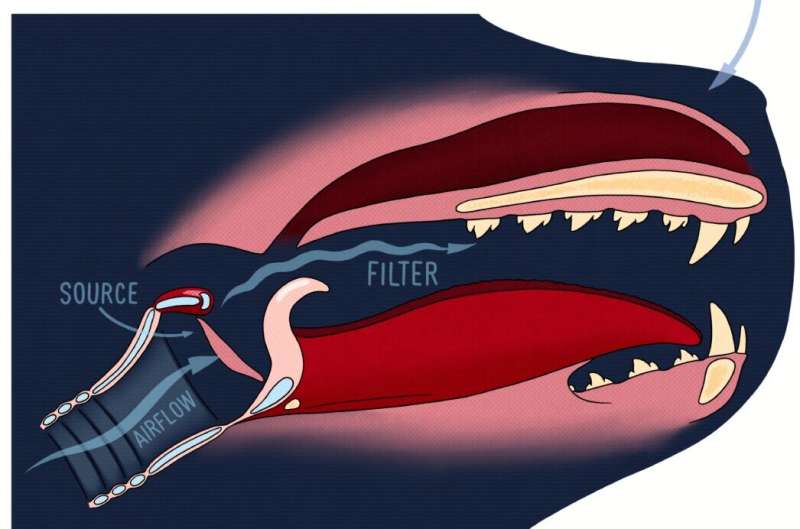Anatomical study confirms that harbor seals are good at learning varied calls

Most animals produce calls that reflect their body size. A larger animal will sound lower-pitched because its vocal tract, the air-filled tube that produces and filters sounds, is longer. But harbor seals do not always sound like they look. They may sound larger—perhaps to impress a rival—or smaller—perhaps to get attention from their mothers. Are these animals very good at learning sounds (vocal learners), or have their vocal tracts adapted to allow this vocal flexibility?
To answer this question, Ph.D. student Koen de Reus and senior investigator Andrea Ravignani from the MPI collaborated with researchers from Sealcentre Pieterburen. The team measured young harbor seals' vocal tracts and body size. The measurements were taken from 68 young seals (up to twelve months old) who had died. The team also re-analyzed previously gathered harbor seal vocalizations to confirm their impressive vocal flexibility.
De Reus and Ravignani found that the length of harbor seals' vocal tracts matched their body size. There were no anatomical explanations for their vocal skills. Rather, the researchers argue that only vocal learning can explain why harbor seals do not always sound like they look.
"Vocal learners will sound different from their body size, but the size of their vocal tracts will match their body size. The combined findings from acoustic and anatomical data may help us to identify more vocal learners," says de Reus. "Studying different vocal learners may help us to find the biological bases of vocal learning and shed light on the evolution of complex communication systems, such as speech. The more we look, the more we see that seals have something to say about human speech capacities," adds Ravignani.
The study is published in Journal of Experimental Biology.
More information: Koen de Reus et al, Vocal tract allometry in a mammalian vocal learner, Journal of Experimental Biology (2022). DOI: 10.1242/jeb.243766
Journal information: Journal of Experimental Biology
Provided by Max Planck Institute for Psycholinguistics




















